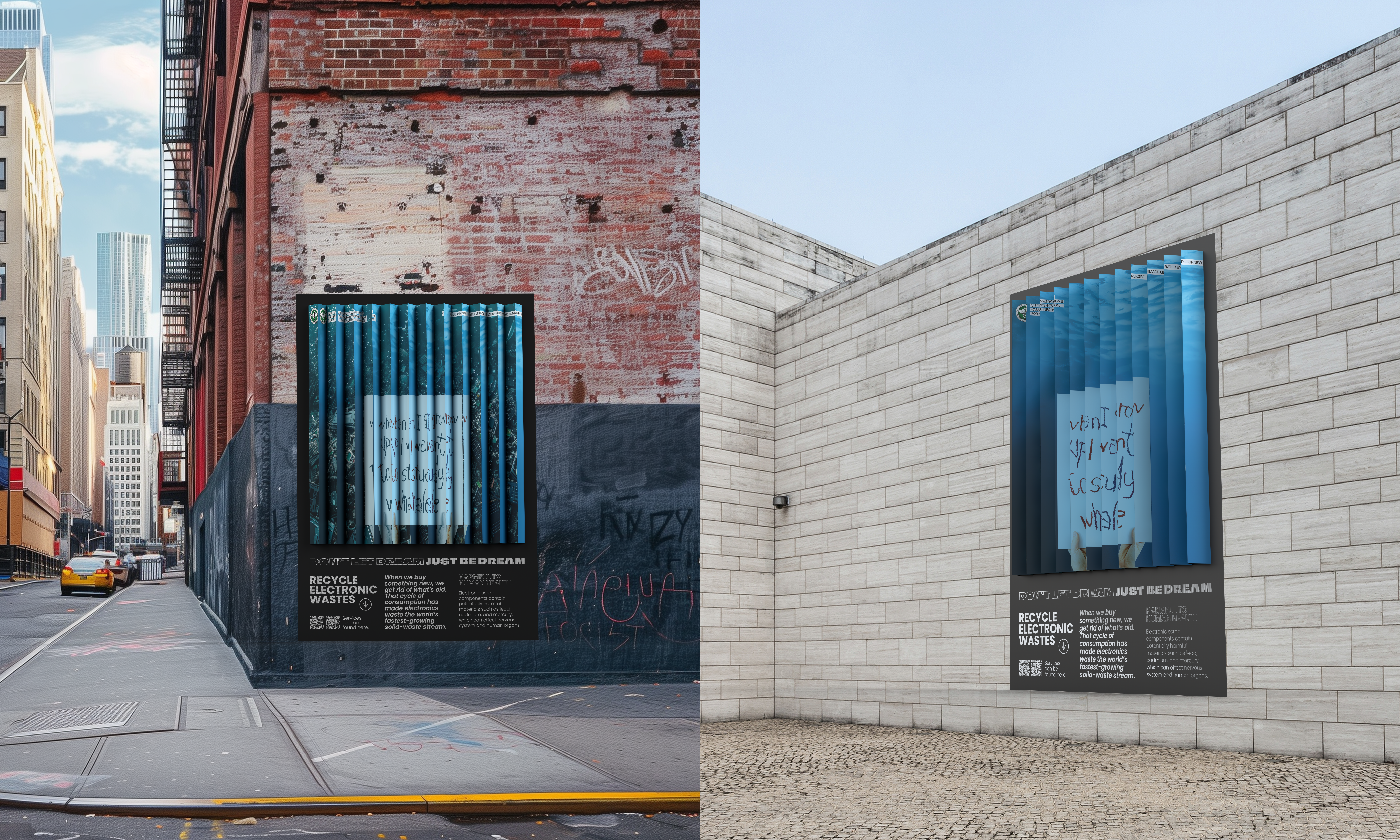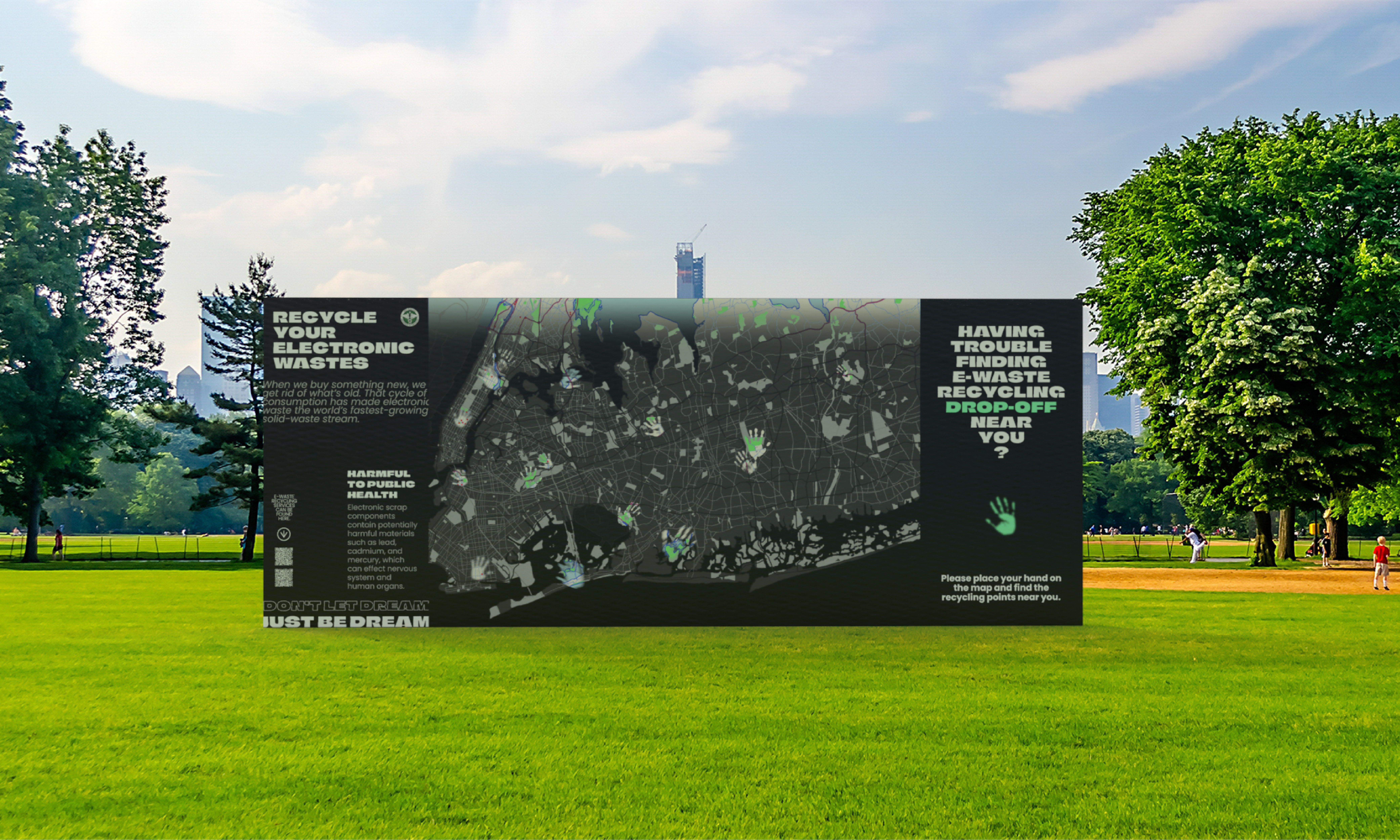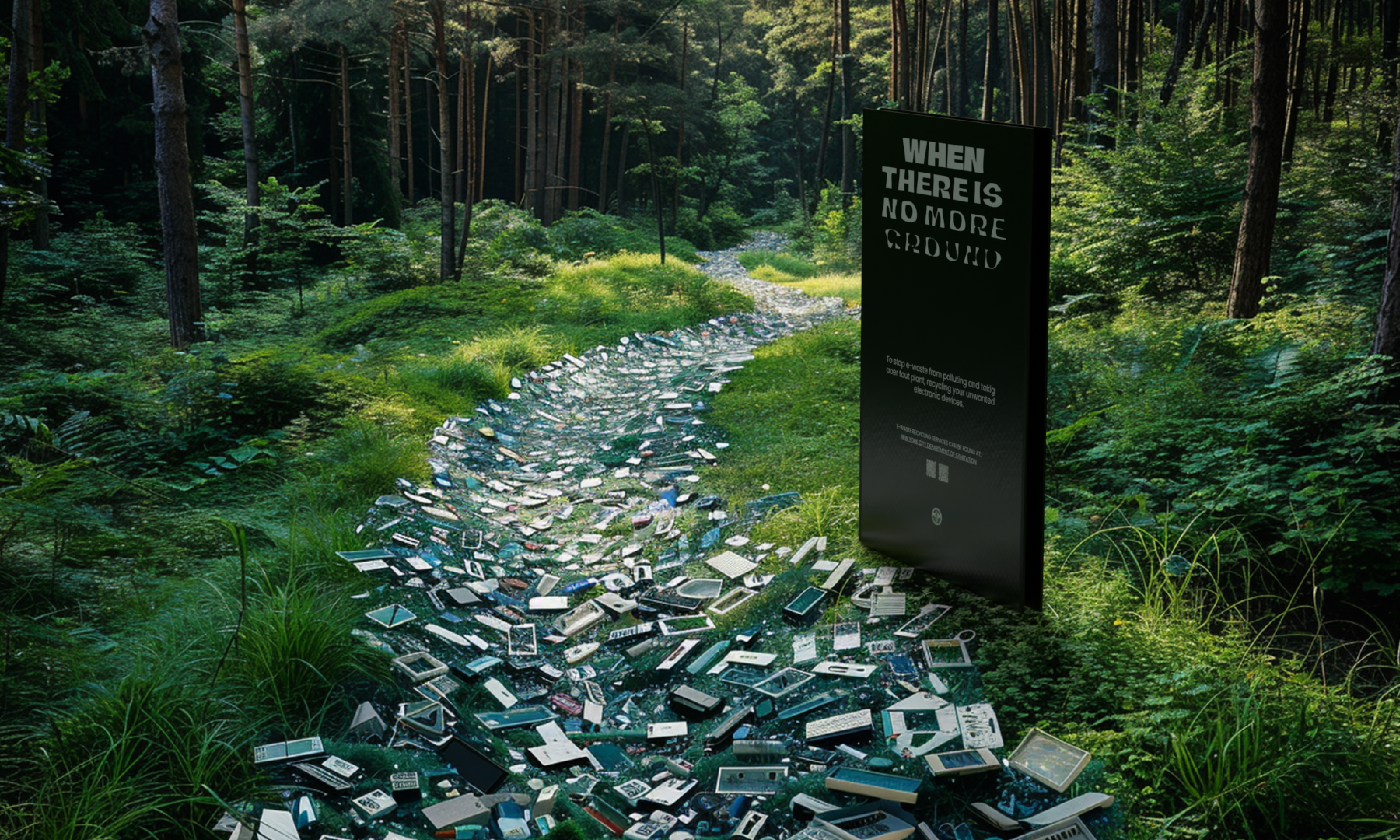A Series of E-waste Campaigns for the New York City Department of Sanitation
Jiangyue He
Due to the increasing use of electrical and electronic devices, electronic waste or e-waste has become a major concern. The article “Young Americans Are the Biggest E-Waste Contributors” states that 60% of young adults aged between 18- 29 has no idea what e-waste is. A large portion of them regularly contributed to e-waste and were unaware of the environmental effect caused by e-waste, or that it can be recycled. People might feel that their individual efforts in e-waste recycling won’t make a significant difference in the broader context of waste management and environmental conservation. Especially when it comes to small electronics, there is less motivation to properly dispose of and recycle them. Some of the obstacles to e-waste disposal/recycling include the inconveniences of recycling e-waste, ethical problems with e-waste exportation, and lack of education on the importance of proper disposal/recycling. Finding ways to acknowledge and encourage people to dedicate to the recycling of e-waste is critical. This project created a series of campaigns to raise public awareness of e-waste recycling and to prompt the e-waste recycling services provided by the New York Department of Sanitation.

This is the first set of the campaign, posters using agamograhp technique which allows audiences to see different images from different angles. With this technique, these posters showcase the before and after effects of a world that is being polluted, with children holding their aspirations of who they hope to become in the future such as “study whales”, “plant trees”, and “play with monkeys”. These statements with the different environments in the background evoke empathy toward children whose dreams will never come true if the environment is destroyed by e-waste.

These posters will be displayed in big scale, on the street where audiences can be engaged and take time to have fun with the agamograph.

This is the second set of the campaign, a heat-sensitive map that is designed to engage parents and children in a meaningful exploration of e-waste cycling services across New York City. Located in playgrounds, parks, and kindergartens, these interactive maps serve as focal points for both interaction and education. The concept was largely inspired by the concept introduced by Maria Montessori, an Italian physician and educator best known for her philosophy of education.

Heat-sensitive map located in the playground for parents and children interaction.

The bottom layer of the map will be shown after heated.

Heat-sensitive map located on park lawn.

The last piece of this campaign series is an installation, the Trail of E-waste, created with AI tool Midjourney. This innovative installation, situated in natural settings like forests, offers the public a glimpse into a future overwhelmed by vast quantities of e-waste, conveying the powerful message, “When there is no more ground.” Through this immersive experience, I aim to capture public attention and foster a deep understanding of the grave consequences of e-waste pollution.